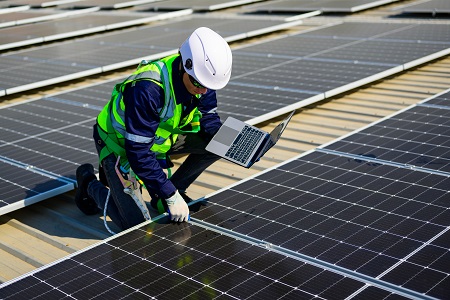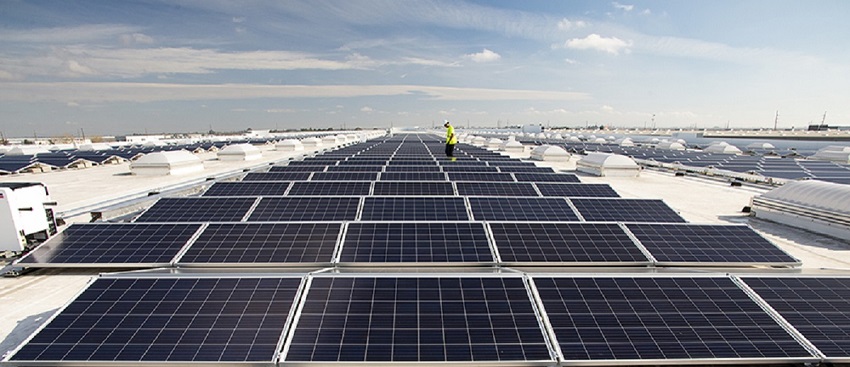Certified Solar Installers Virginia: Lumina Solar Specializes In Offering Advanced Photovoltaic Solutions For Homes And Businesses
History and Establishing
Have you ever wondered how a solar panel business springs from a simple spark of inspiration into a powerhouse of renewable resource? It typically begins with a vision-- one sustained by a mix of innovation, determination, and a pinch of serendipity. The journey of many solar companies mirrors the evolution of the technology itself: from bulky, ineffective panels to smooth, high-efficiency marvels harnessing the sun's bounty.
The Early Days
In the late 20th century, when solar power was still a specific niche idea, pioneers planted seeds for what would end up being a worldwide movement. Envision a little workshop filled with curious engineers, tirelessly exploring with solar batteries. Their enthusiasm was palpable, often driven by a desire to combat climate change and reduce dependence on nonrenewable fuel sources.
One such anecdote has to here do with a founder who, inspired by a camping journey, understood that even in remote areas, the sun might power important gadgets. This easy observation stimulated a company's objective to equalize access to clean energy.
Establishing Concepts

- Development: Continuously pressing the limits of solar technology to enhance performance and durability.
- Sustainability: Devoting to environmentally friendly manufacturing and reducing carbon footprints.
- Availability: Making renewable resource services inexpensive and practical for everyday users.
Milestones in Development
| Year | Secret Event |
|---|---|
| 1985 | Business established in a little garage, concentrating on research study and advancement. |
| 1995 | Industrial solar panel product launched, acquiring local attention. |
| 2005 | Expanded to global markets, welcoming worldwide eco-friendly energy objectives. |
| 2015 | Presented advanced solar panel technology with improved energy conversion. |
Isn't it interesting how these incremental steps, often neglected, shape the energy landscape today? The solar panel company story is not practically technology; it's about an unrelenting mission for a brighter, cleaner future.

Developments in Solar Panel Technologies
Ever noticed how some photovoltaic panels shine brighter and last longer? It's not magic; it's the science of photovoltaic performance. Modern solar panel business invest greatly in innovations like bifacial cells, which record sunshine from both sides, improving energy harvest without broadening roofing area. Have you ever questioned why some panels perform much better on cloudy days? That is because of advances in thin-film solar technology, which thrives under diffused light conditions.
Item Variations Customized to Special Needs
One size never fits all. Solar panel providers now provide:
- Monocrystalline panels for maximum effectiveness and smooth aesthetics, ideal for space-constrained rooftops.
- Polycrystalline panels, which use an affordable alternative without compromising excessive output.
- Building-integrated photovoltaics (BIPV), merging solar tech seamlessly into architectural elements like windows and facades.
Picking the right product isn't just about upfront expense; it's about matching your environment, energy goals, and long-lasting savings. Homes shaded by trees require panels that excel in low-light circumstances, something many ignore till energy costs climb up unexpectedly.
Technical Tips for Optimum Selection
- Assess the temperature coefficient-- lower worths suggest panels lose less efficiency on hot days.
- Try to find panels with boosted anti-reflective coverings to maximize light absorption.
- Consider the panel's service warranty not just for defects, but for ensured power output over years.
- Don't underestimate the importance of the inverter innovation matched with the panels; it can make or break your system's performance.
Beyond Panels: Emerging Patterns
Picture solar panels that adjust their angle immediately to go after the sun-- tracking systems are becoming more accessible, increasing yield substantially. Or solar tiles that mix invisibly into your roofline, changing your home into a quiet, self-sufficient power generator. These developments are improving what a solar panel company uses-- not simply products, but incorporated energy solutions.
Market Existence and Global Operations
Ever wonder why some solar panel business seem to grow up in every corner of the world while others barely make a ripple? The distinction lies not simply in technology but in mastering the art of navigating varied markets. Expanding globally is like planting seeds in different climates-- you need to comprehend each environment's unique conditions to prosper.
Take, for instance, the elaborate dance of logistics and supply chain management. Delivering panels halfway throughout the world isn't just about range; it has to do with timing, customizeds, tariffs, and adjusting to local need changes. A company with robust worldwide operations prepares for these variables, making sure panels show up on schedule without pumping up costs. This insight is no little feat and often separates market leaders from fans.
Key Methods for Expanding Market Presence
- Localized production: Developing production centers near target markets reduces shipping delays and import intricacies.
- Strategic collaborations: Teaming up with local firms speeds up market penetration and develops trust.
- Adaptive item style: Tailoring solar panel tech to weather, sun strength, and facilities subtleties enhances efficiency and approval.
What about the human factor? Solar panel business running globally need to reconcile cultural distinctions and regulative subtleties without losing sight of their core mission. For instance, what operate in a sun-drenched desert may fail in a humid seaside area. In some cases, the most ingenious solution is merely listening-- taking in regional insights to fine-tune technology and approach.
Specialists often recommend a phased rollout instead of a shotgun expansion. Why risk overextension when measured growth constructs sustainable momentum? Scaling carefully indicates balancing aspiration with functional strength - Residential Solar Panels Virginia. In the race for sustainable energy supremacy, patience can be as valuable as speed.
Ecological Impact and Sustainability Practices
When solar panels first emerged, many presumed they carried no ecological luggage. The reality is more nuanced. The production of photovoltaic cells includes rare earth metals and energy-intensive procedures, which can leave a sizable carbon footprint before the panels even reach rooftops. The real ecological expense depends heavily on the sustainability practices used by the photovoltaic panel business throughout the lifecycle of their products.
How often do we pause to consider what takes place to photovoltaic panels at the end of their beneficial life? Unlike batteries or electronic devices, solar panels can last 25-30 years, but disposal and recycling pathways remain underdeveloped in numerous regions. A business committed to minimizing environmental harm will have a robust prepare for recycling photovoltaic materials, restoring important silicon, glass, and metals to avoid land fill build-up.
Secret Sustainability Strategies
- Utilizing low-impact manufacturing methods that decrease water and energy intake.
- Implementing closed-loop systems to recycle production waste back into new panels.
- Taking part in transparent supply chain audits to guarantee ethical sourcing of raw materials.
- Designing panels for simpler disassembly to aid future recycling efforts.
It deserves noting that some solar companies have pioneered ingenious approaches, such as incorporating eco-friendly components or utilizing less harmful chemicals during fabrication. This not only minimizes environmental strain but also sets a precedent for the industry. The concern stays: can the solar market really pivot towards a circular economy design without sacrificing efficiency or affordability?
Expert Tips for Examining Sustainability
- Ask about the business's dedication to carbon-neutral production and whether they offset emissions.
- Examine if they partner with certified recycling facilities committed to solar panel waste.
- Try to find transparency reports detailing ecological effects and sustainability goals.
- Think about the durability and guarantee of panels as an indirect step of resource effectiveness.
In the end, selecting solar power must indicate more than simply slashing electrical power costs; it's about nurturing a future where energy is gathered properly and waste is thoughtfully handled. Solar panel companies that embrace this philosophy not only light up homes but also cast a brighter light on sustainable development.